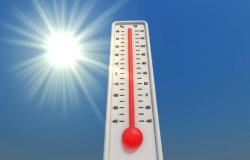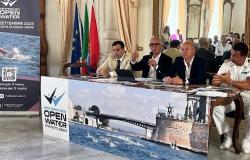(Adnkronos) – The water in the reservoirs in Sicily “is slowly decreasing, as it is consumed and it does not rain”, at the moment it is “at 25 percent of the total”. And by “the month of July” the situation could worsen further, “as per the scenario developed”. There are territories in which the urban water networks in which “even 50 percent of the water” is lost and virtuous cases such as those of many urban networks in municipalities of Enna and Nisseno where the losses have been reduced with reconstruction interventions. And those at greatest risk are “tree crops. “However, “in the face of a serious situation there is a regional Civil Protection plan for immediate interventions by the summer for the management of the emergency with the reuse and recovery of abandoned wells, restructuring of wells and lifting pumps as well as a plan to strengthen the public tanker fleet already in implementation. Which will be followed by a medium-term plan with further new wells and the revamping of desalination plants. And, finally, a long-term plan for large-scale infrastructure projects, which involve significant investments, which are also part of the PNRR, for example”. Speaking in an interview with Adnkronos is engineer Salvo Cocina, Head of the Civil Protection Department in Sicily and head of the control room for the drought emergency in Sicily. Who takes stock of the current situation.
Today the reservoirs are at an all-time low, agriculture and tourism are at risk of a setback and, above all, the citizens of several dozen municipalities continue to suffer from water rationing and others in a hundred municipalities from a reduction in water that has been going on for months. “There is a real risk that, as time goes by, the damage to agricultural companies and livestock farms will increase with possible health risks linked to the slaughter of livestock”, denounce the leaders of Anci Sicilia.
The head of Civil Protection Cocina admits that the “situation” on water in Sicily “is serious and complex”. But he explains that: “The situation of water resources and drinking water supply is constantly monitored by the basin authority, even if the first alarming signs began in January, I would say worrying. In February and March 2024, these data lead us to declare a regional crisis situation in both agriculture and drinking water”.
In April, as the drought continued, the region requested a state of national emergency, which was obtained on May 6. “The reservoirs in Sicily are at 25 percent of their total capacity, or 50 percent compared to last year. And this is an alarming fact, because it is immediately clear that we cannot cope with irrigation, like last year, so agriculture is the first to be hit. Secondly, there are some basins for drinking water, two in particular, Ancipa and Fanaco, that have serious problems of exhaustion,” says Cocina.
“On irrigation, the game is lost from the start – Cocina underlines – the climate has not helped us, it has not rained here since September/October of last year and in the years before it rained very little. A condition of water stress, there is no water in the reservoirs because it has not rained. They can also say that the Region does not know how to manage the reservoirs well, but the reality is only one: it has not rained. Therefore, various structural and non-structural measures have been launched, in the very short, short, medium term of the measures to be adopted”. In addition to the long-term measures.
92 million euros are arriving in Sicily for the construction of priority water infrastructures. This is the first tranche of funding for the 49 interventions, for a total of 1.6 billion, included in the Sicilian Region’s Water Plan, fully approved by the Ministry of Infrastructure and incorporated into the National Plan for the Safety of the Water Sector (PNSII). “With this first tranche of funding – says the President of the Sicilian Region, Renato Schifani – we will immediately start working on some of the works planned to address a phenomenon that is hitting our Island hard. This is just the beginning of the mass of interventions that we have planned in the Plan that the Region has finally equipped itself with for the first time with a systemic overall vision. Now we move on to the operational phase, with the regional structures committed to implementing what is planned without delay. We will ensure that Sicilian citizens and entrepreneurs can have concrete answers as soon as possible to fill the long-standing gaps in our water system”. “The worst-case scenario tells us that the situation will worsen in August and September”, warns Cocina. “From an irrigation point of view, the game is already lost. The most serious risk is for tree crops – he says – which, if they are not irrigated, risk drying out. And to replant trees and bring them into production it takes at least 4 or 5 years, one year is not enough. Therefore, priority is given in the agricultural field to ’emergency irrigation’, precisely to avoid the ‘death’ of shrubs, to be clear”.
“So what is the strategic choice that we have adopted since January? That of extending the useful life of the reservoirs to intercept the water that will be available in the winter period, immediately rationing the water”, explains Cocina. “So the Basin Authority has imposed to withdraw less water from February – he adds – in favor of drinking water. We cannot sacrifice citizens, hospitals or food production. The most serious issue concerns the supply of the Fanaco and Ancipa dams”. “There are eight municipalities in the Nisseno area and dozens more in the Agrigento area that depend exclusively on the Fanaco, then there are Gela and Caltanissetta that depend on the Ancipa/Fanaco and that are the first to feel the crisis. The Fanaco, according to forecasts, will run out at the end of July”, that is, in a few days. “There is talk of floating rafts to collect the remaining water – explains Cocina – all of this compatible with the fish, which must be taken care of. All the planned initiatives have been launched on these”.
“The second worst case scenario is that of the Palermo area,” Cocina continues, “supplied by the lakes of Scanzano, Rosamarina, Poma, Piana degli Albanesi, which will see the exhaustion of resources in January 2025, again in the worst case scenario, the so-called ‘worst case’”. So we are focusing on “mitigation” measures, he says. “First of all, we started to reduce withdrawals and irrigation”, he says. “We held a series of meetings, set up the control room and created provincial tables. And we collected requests from the territory”. And in May, the Council of Ministers approved the state of national emergency for drought in Sicily, as requested by the regional council, for a duration of 12 months, allocating the first 20 million euros, “with the possibility of increasing resources in the short term”. “So, we have developed an intervention plan for 20 million euros”.
“We have collected all the alternative sources,” he says. “Our plan includes over 1,000 liters per second of new water, while Fanaco and Ancipa are missing “at least about 500 liters per second.”
In Sicily there is also a “water trajectory problem”, “Often the water is in the Trapani area and it cannot all be moved to Gela – he explains – there is also this problem of networks. Even though in Sicily we have a good infrastructure network. We are able, for example, to move water, from Trapani or Palermo or Messina to Gela, even if with limitations”. One of the first “very short-term” measures are “the tankers, even if they do not solve the global water problem but serve to solve local problems among which the most serious is livestock farming”. “Since April I have already financed the repair of about 80 tankers. And I have financed new tankers, which since they cannot be found, used ones are being found”.
The Sicilian Region has started the issue of the immediate restoration of the desalination plants in the control rooms”. “Unfortunately the National Department did not want to include them among the urgent interventions”, he explains. But the “desalination plants need a main network in which to introduce the produced water that works and is capable”. The problem of the desalination plants is also linked to the pipelines to the sea, “because the brine must be thrown away, 60 percent of the treated water is returned and 40 percent is drinkable water”.
The Municipalities are also concerned about tourism. “The specter of cancellations is growing. Unfortunately, all of this will cause a progressive impoverishment of the territories which, in turn, will have direct repercussions on the finances of the municipalities”, says the Anci. “But the head of Civil Protection, pours water on the fire. “To date, in the tourism sector we have no reports of crisis situations”, he explains. With specific reference to the province of Agrigento. “There is a very close internal dialectic, but we cannot speak of critical situations. And in any case the president has established a permanent table to Prevent and resolve crisis situations”. (by Elvira Terranova)








